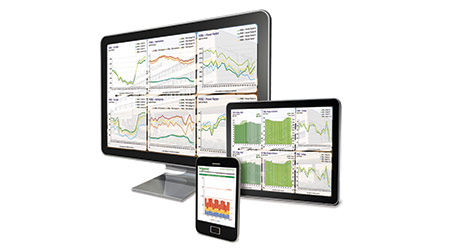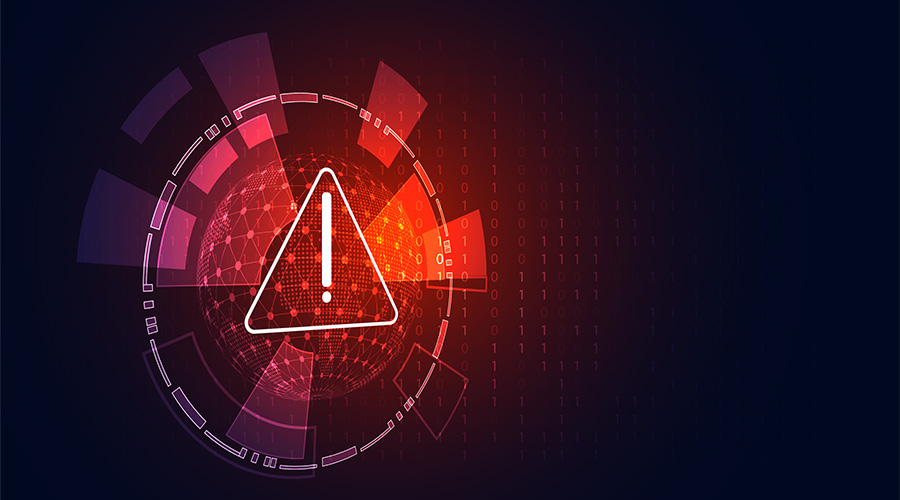As Hurricane Irma rushed toward the Florida coast in September 2017, hospitals and healthcare facilities prepared for the worst. One health system with several facilities in the storm’s path took every precaution to ensure the safety of patients and staff, evacuating patients to other hospitals and rallying its emergency response team to provide support when needed. While several area hospitals went dark in the midst of the storm, none of the health system’s facilities lost power thanks to diligent preparation and advanced building management technologies.
Unlike some other hospitals, each of the health system’s facilities in the example above was enabled with Internet of Things (IoT)-connected devices, edge control and remote monitoring and control solutions, all managed by an integrated building management system (BMS). The BMS allowed operations managers to automate emergency power systems testing, shut down building controls and remotely monitor power conditions and building performance before and during the storm.
The role of IoT in hurricane preparedness
Advances in IoT technologies have created a smart network of connected electrical and mechanical products that create and collect asset data. With this type of network and the right analytics tools, operations staff can gain powerful new insights into their building’s system maintenance and energy use, power conditions, equipment health and much more.
Consider the size of a 200- or 500-bed hospital. There are tens of thousands of electrical and mechanical points within such a facility that must be checked to ensure proper configuration and operation. It’s not possible for a small facilities team to manage this physically, which is why an IoT-connected network is so valuable. By collecting and analyzing this data, operations personnel can identify instances of faulty equipment, equipment that is working but not configured properly, not working at all or working inefficiently, and address those problems. The ability to access and analyze this data is critical to the smooth operation of a healthcare facility during normal operations, and it is especially important for emergency preparedness.
Another key capability of IoT-enabled automated building technology is remote monitoring. Remote monitoring allows facility managers to collect data from all connected assets within the facility and transmit those data points to a remote platform, such as a central crisis cell, which can monitor building performance. In an emergency, this information enables facility and operations managers to take the necessary action to prevent further damage to building systems.
Critical steps for a resilient facility
Uninterrupted access to power can mean the difference between life and death. Hospitals and surgical centers need constant, reliable power to feed medical instruments, life support machines, and diagnostic equipment. Patient facilities must have proper ventilation and HVAC to maintain a comfortable environment in which to heal. Hospitals need working security systems, cameras and alarms to ensure the safety of patients and staff alike.
In addition, facility and operations managers must also prioritize the resiliency and availability of mechanical and electrical equipment to avoid lasting damage and ensure the facility can get back up and running quickly.
There are several important steps to take to ensure a resilient infrastructure in the face of a hurricane:
· Address power quality issues: Power quality and proper operation of electrical equipment is critical to a facility’s ability to retain power during and after a storm. A BMS with advanced power management capabilities can identify issues in the health and power quality of the electrical system that could cause bigger issues later on.
For example, with high levels of harmonics or noise on a network, the electrical system is already distressed. Adding destructive weather elements can cause further problems. Harmonic mitigation solutions like active filters can ensure the electrical system will be less susceptible to power tripping in the event of power disturbances on the network.
· Prepare for power outages: Given the high likelihood of an outage, building teams must optimize generator power and energy consumption for emergency supply to last for an extended period. An integrated building and energy management system will help assess the capacity usage of power equipment, and can even identify critical loads and their power demand. A BMS integrated with the electrical and power supply can also automate emergency power testing to ensure system readiness. Additionally, fuel consumption on emergency power should be carefully evaluated and monitored with a strong integration of the generator fuel oil system and the building management system to plan for proper reserves and supply routes during the hurricane.
· Back up and protect data: Ideally, the hospital’s IT team already has this covered, but it’s worth the reminder to back up all database software. In the event of a damaged computer, the database can easily be recovered. Having a strong, IoT-enabled infrastructure goes a long way towards ensuring hurricane readiness. And once a BMS is in place, ensuring readiness means that connected monitoring systems are in place and issues are identified in the critical pre-storm days.
· Switching to emergency mode: When the impact of the storm is inevitable, facility managers must switch the building to emergency mode: shedding non-critical loads, performing temperature resets to reduce demand on the HVAC system, and setting the security system to appropriate emergency configuration. Here again, a BMS can help manage the shutdown – even remotely.
How BMS can help healthcare facilities weather the storm
Once a hurricane makes landfall, facility staff shift from preparing for the storm to riding it out. Despite comprehensive preparation, the abnormal conditions enforced by a hurricane require very specific action to ensure safety and security for everyone in the building.
To ensure control in the absence of electricity, internet and cellular connections, it’s prudent to put the control room on emergency power. Generator power allows an integrated building management system to provide easy access to all power management, HVAC management and security management of the building. As long as there is a power source, resilient building and security management controllers can operate on their own without a network connection.
Security managers can use a BMS and integrated security systems to monitor and manage the varied security issues that can arise during an emergency. For example, they can manually control or lockdown doors or add users who need emergency access.
An advanced building management system can also help provide analytics on the hundreds of alarms that may be triggered during a hurricane and quickly provide a root cause and source for the event. This will help building managers identify the specific area in which an equipment fault or security breach has occurred.
While all of these steps are crucial to the immediate and long term fortification of the facility during the storm, lack of information can lead to inaction and put people at risk. Consistent, clear and frequent communication is absolutely critical in an emergency situation. Integrated security management systems include databases of all the people who have access to the building, which can be used to facilitate mass messaging, keeping everyone informed about what is happening and what they need to do. Facility managers can use these communications to maintain safety and security during the storm and streamline the recovery process afterwards.
Embrace IoT-enabled BMS for better hurricane preparedness
With an integrated building management system in place, activities that would normally overwhelm facilities staff can be executed quickly and efficiently and by a smaller staff. The ability to remotely view, analyze and activate building controls, energy systems, backup power sources, HVAC, communications and security systems means facility staff can be offsite and out of harm’s way while they continue to prepare for and manage emergency activities.
Alban Cambournac is the vice president of U.S. EcoBuilding for Schneider Electric.

 What Every EVS Leader Needs To Know
What Every EVS Leader Needs To Know Blackbird Health Opens New Clinic in New Jersey
Blackbird Health Opens New Clinic in New Jersey St. John's Riverside Hospital Falls Victim to Data Breach
St. John's Riverside Hospital Falls Victim to Data Breach Grounding Healthcare Spaces in Hospitality Principles
Grounding Healthcare Spaces in Hospitality Principles UC Davis Health Selects Rudolph and Sletten for Central Utility Plant Expansion
UC Davis Health Selects Rudolph and Sletten for Central Utility Plant Expansion